At this time of year, you may be worried for your tender plants, but never fear, a few simple tricks will keep them in tip top condition throughout the cold snap and beyond.
Containers covered
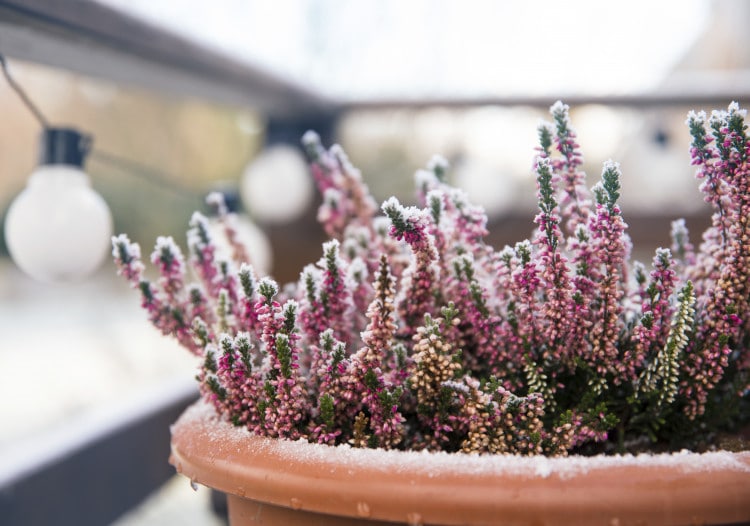
Plants in pots on your patio are vulnerable to frost because their large surface area makes their soil more prone to freezing than that in the ground.
As water freezes, it expands, which can damage delicate roots, especially if the pot cracks and exposes roots directly to the cold.
This puts all pot plants at risk of damage. Unglazed terracotta pots are especially prone to cracking but don’t worry – the steps you take to protect your plants will also protect prize pots from the cold. Fortunately, container-grown plants are very easy to protect.
Your best defence is to move them to a sheltered spot beneath the eaves of the house or against a fence or wall. Heat that radiates from the house and the reduced air flow that comes from being against a surface will protect them from the most severe cold.
Wrapping pots with leftover bubble wrap from Christmas deliveries is also a good plan. This provides an insulating layer to shield roots from the frost.
Just be sure to leave soil and drainage holes exposed so that the plant can still be watered.
Standing containers on pot feet or wine corks (about four per pot) will also increase drainage and stop them becoming water-logged.
This makes pots less likely to crack since there isn’t as much water in the pot to freeze.
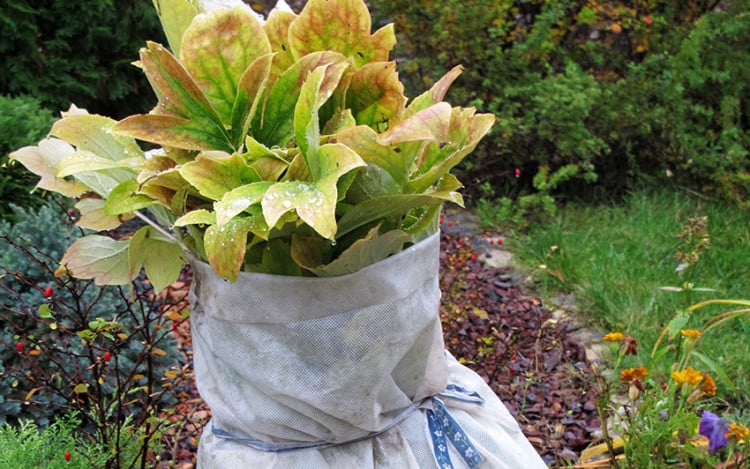
Be sure to place materials carefully so that they are not blocking drainage holes or this will undo some of your good work! Since cold air sinks, lifting pots off the ground also takes them away from the coldest air, which has a protective effect.
Rooting duties
Plants with shallow root systems, like Heuchera and strawberries, are prone to frost heave – where repeated freezing and thawing of groundwater pushes plant roots out of the ground. Moisture-retentive soils, like heavy clay, may be worse for this since there is more water present to cause issues.
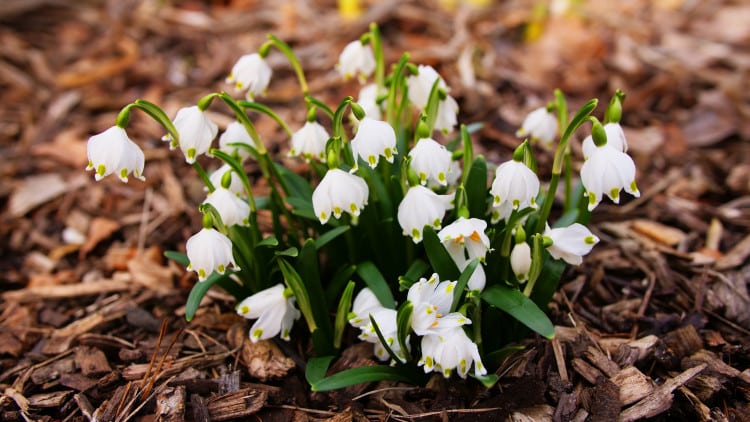
An easy way to protect plants from frost heave is by applying a thick layer of mulch to the soil. This acts as a protective barrier between the soil and cold air, insulating roots and protecting plants from temperature fluctuations.
Biodegradable mulches include bark chippings, straw and compost.
These will not only protect plants from frost but also improve the soil as they break down. Alternatively non-bio-degradable mulches, like slate chips, pebbles and decorative aggregates, offer a smart-looking layer of frost protection.
To lay a mulch, weed the area when the ground is not frozen – weeds will be more difficult to remove from frozen ground or from beneath a mulch once it’s laid. Then simply spread your chosen material with a trowel or spade around sensitive plants until you have a layer that measures five to seven centimetres thick.
Tender and exotic
Plants from warmer climes, like tree ferns and outdoor palms, as well as Meditterranean shrubs like Pittosporum tobira (Japanese pittosporum), Trachelospermum (star jasmine) and Callistemon (bottlebrush) tend to appreciate frost protection over winter.
For palms and ferns, it is most important to protect their central growing point. Pack straw, shredded paper or dry leaves around the crown and wrap with horticultural fleece secured with garden twine.
In colder areas – such as northern England and Scotland – wrapping the entire foliage canopy three or four times around with fleece as well is usually best.
The lower stems of tender climbers and shrubs that are hardy down to only zero degrees (H3 category) are best packed with insulating materials and wound round with fleece, with wrapping extended to all foliage for shrubs.
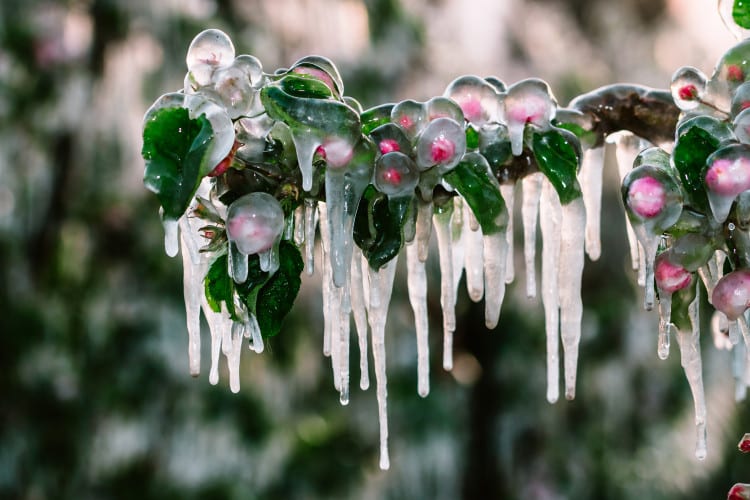
It’s best to remove wrapping during periods of mild weather to prevent rotting. Check your plant’s hardiness on plant labels or via the RHS online plant finder.
Beat the cold
Sometimes anticipating an oncoming frost can be tricky, but staying ahead of the weather will help dividends in preparing plants for an upcoming bout of frost.

Check the MET office weather alerts to see if a cold front is on its way. If there seems little certainty, there are ways you can determine which way the weather is most likely to turn. For instance, clear nights are often colder than cloudy ones, as clouds can act as an insulating blanket to our atmosphere. If it’s starry out, temperatures may plummet.
Also, a still night allows cold air to pool and cause a frost. So, windy nights are less likely to frost over because the wind disperses these pockets of cold air.
It’s also an idea to always keep your hands warm and protected at this time of year, with a high-quality brand of gloves.
Whether you’re planting evergreens for late garden colour or popping winter pansies in their window boxes, work in some time for frost protection and it’ll ensure garden’s remains beautiful and bountiful rather than bounty for jumping Jack frost!
David Domoney is a Chartered Horticulturalist, Broadcaster, and Author. David has worked with a number of the UK’s leading garden retailers as a plant buyer and strategic consultant. With more than 30 years experience, in horticulture, David is as passionate about plants now as he was when he bought his first plant at a village fete.





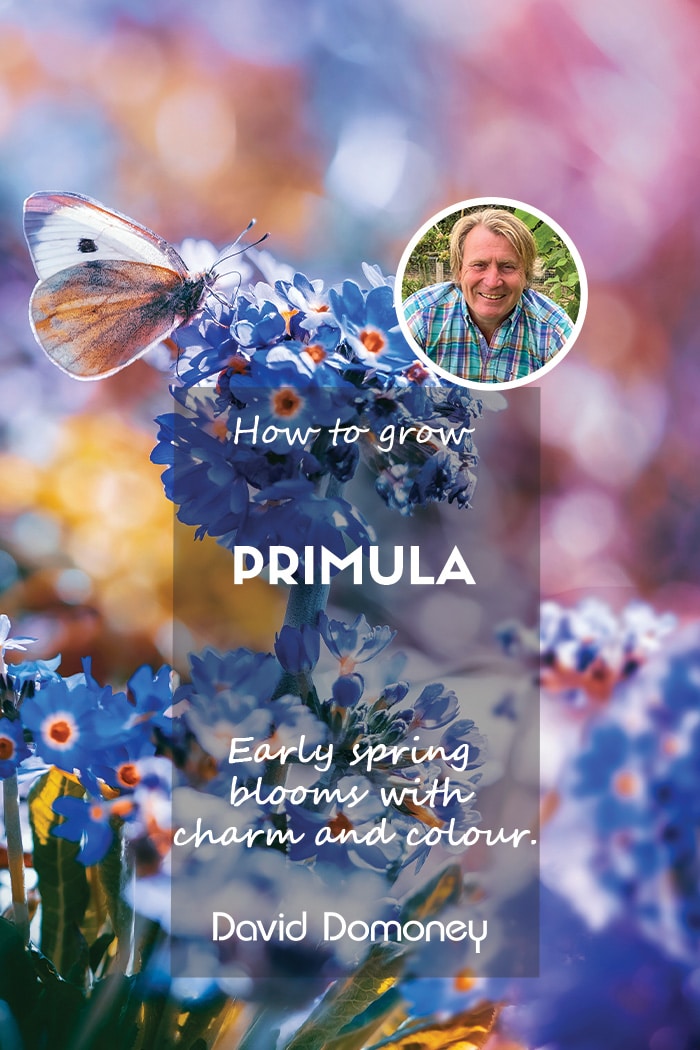

Leave A Comment